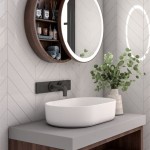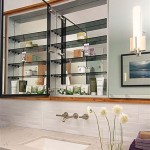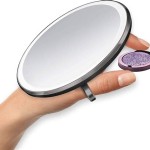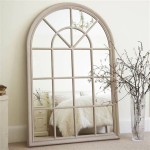How To Mount a Heavy Frameless Mirror
Mounting a heavy frameless mirror requires careful planning and execution to ensure both safety and stability. The absence of a frame removes a traditional mounting point, necessitating alternative methods specifically designed for handling substantial weight. This process involves selecting appropriate hardware, preparing the wall, and employing safe lifting and securing techniques.
Assessing the Mirror and Wall
Before beginning, accurate measurements and assessments are crucial. This includes determining the mirror's exact weight, dimensions, and thickness. Equally important is understanding the wall's construction. Drywall requires different hardware than concrete or brick. Knowing the wall's composition will dictate the type of anchors and fasteners needed to support the mirror's weight securely.
Choosing the Right Mounting Hardware
Selecting appropriate hardware is paramount for safety and stability. For heavy frameless mirrors, specialized mounting systems are recommended. These typically include: *
J-Bars or Z-Clips:
These clips grip the mirror's edges, distributing the weight across multiple points. J-bars are ideal for top and bottom mounting, while Z-clips offer a more discreet side mounting option. *Mirror Adhesive:
While adhesive can be used in conjunction with mechanical fasteners, relying solely on adhesive for heavy mirrors is generally discouraged. The adhesive serves as a supplementary security measure rather than the primary support. *Heavy-Duty Anchors:
Choosing the correct anchors for the specific wall type is critical. For drywall, toggle bolts or molly bolts are often preferred for their weight-bearing capacity. Concrete or brick walls may require masonry anchors or concrete screws. *Safety Backing:
Applying a safety backing film to the back of the mirror is a highly recommended safety precaution. In the event of breakage, the film helps hold the shards together, minimizing the risk of injury.Preparing the Wall
Proper wall preparation ensures a secure and lasting installation. The designated area should be clean, dry, and free of any debris. Mark the desired mirror position carefully using a level and pencil. Accuracy at this stage is vital for preventing crooked mounting. Pre-drilling pilot holes is necessary for most anchor types and ensures precise placement and reduces the risk of wall damage during installation.
Installing the Mounting Hardware
Following the manufacturer's instructions for the chosen mounting system is essential. This usually involves installing the wall-mounted portion of the clips or brackets first. Ensure they are level and evenly spaced to properly distribute the mirror's weight. If using adhesive, apply it according to the product instructions, typically in vertical beads or a grid pattern, ensuring adequate coverage across the mirror's back.
Mounting the Mirror
Lifting and positioning a heavy frameless mirror requires assistance. Two or more people should carefully lift the mirror and align it with the installed hardware. Slowly and carefully lower the mirror onto the mounting clips or into the adhesive. Gentle pressure should be applied to ensure a secure fit. Once in place, double-check the alignment and make any necessary adjustments before the adhesive sets or final tightening of clips occurs.
Safety Precautions
Safety should be the primary concern throughout the installation process. Wearing appropriate safety gear, including gloves and eye protection, is essential. Lifting heavy mirrors requires proper lifting techniques to prevent back injuries. Ensure the working area is clear of obstacles, and avoid placing the mirror in a position where it could fall or be knocked over during installation. If unsure about any aspect of the process, consulting a professional installer is recommended.
Post-Installation Inspection
After the installation, a thorough inspection is necessary. Check for stability by gently applying pressure to different areas of the mirror. Confirm that the mirror sits flush against the wall and that there are no gaps or unevenness. Verify that all mounting hardware is securely fastened and that the mirror is held firmly in place. Regularly inspect the mounting hardware and mirror for signs of wear or loosening over time.
Cleaning and Maintenance
Cleaning a frameless mirror requires specific techniques to avoid damaging the edges. Use a soft, lint-free cloth and a suitable glass cleaner. Avoid abrasive cleaners or scrubbing pads. For routine cleaning, a simple mixture of water and vinegar is effective. Spray the cleaner onto the cloth rather than directly onto the mirror surface to prevent seepage behind the mirror. Regular cleaning will maintain the mirror's appearance and prevent the buildup of dust and grime.

How To Install A Mirror Without Frame Merrypad

How To Hang A Frameless Mirror On The Wall With Pictures

How To Install A Mirror Without Frame Merrypad

How To Hang A Frameless Mirror On The Wall With Pictures

How To Hang A Hanging Mirror Without Accompanying Hardware
:strip_icc()/DesireeBurnsInteriors1-f76d25cad90041c88fbae4a7dc10aab4.jpg?strip=all)
2 Simple Ways To Hang A Frameless Mirror

How To Hang A Frameless Mirror On The Wall With Pictures

How To Hang A Heavy Mirror Diy Family Handyman

How To Hang A Large Wall Mirror Step By Tutorial

How To Hang A Large Or Heavy Mirror








